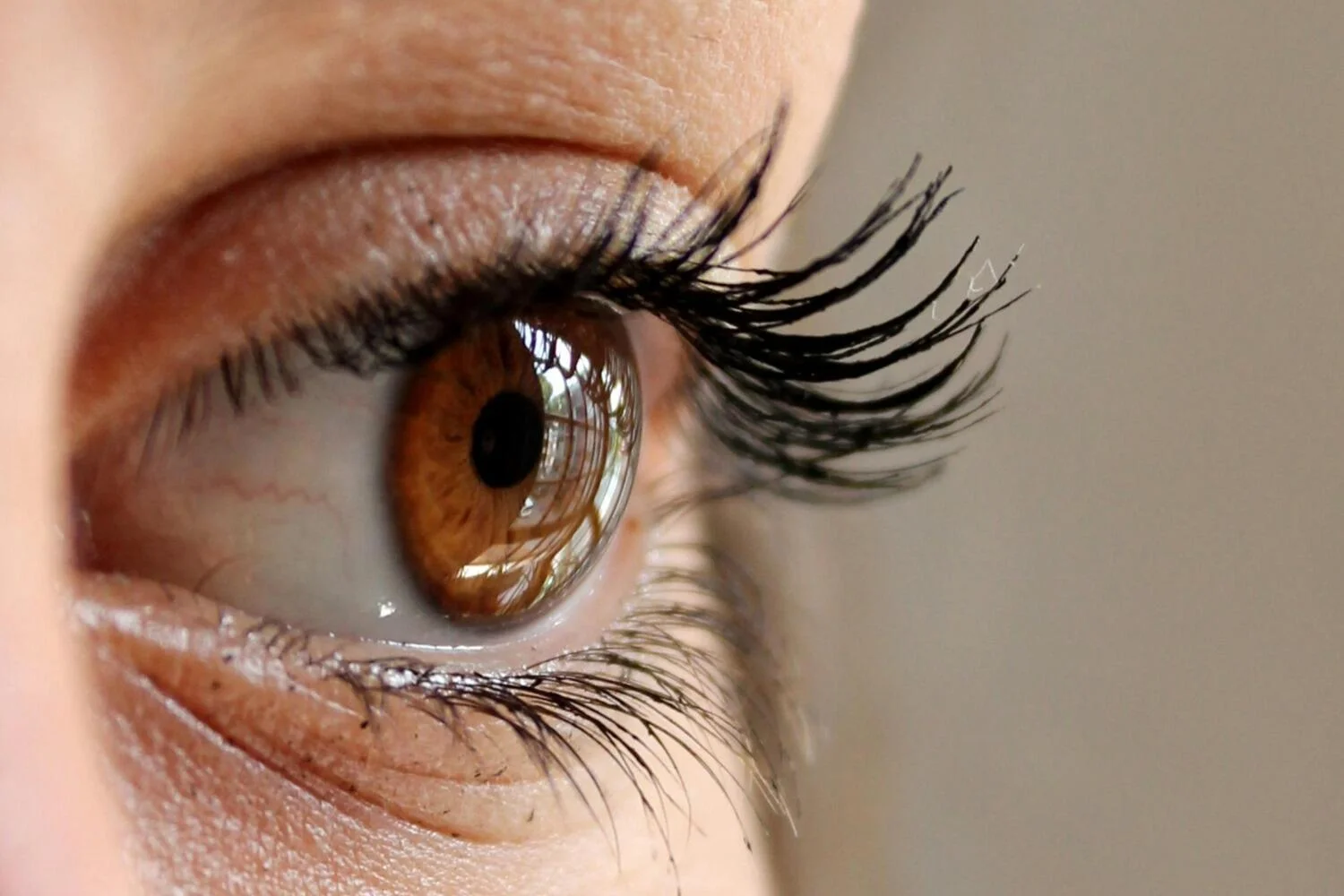As we grow older, it’s natural for our bodies to undergo changes, and our eyes are no exception. Have you ever found yourself squinting to read menus or struggling to focus on your phone? This difficulty in seeing things up close is known as presbyopia, a common condition that typically begins to affect people in their 40s or 50s. In fact, studies suggest that around 26% of the global population experiences presbyopia.
Take a moment to look at the image below. It’s a classic depiction of someone adjusting to life with presbyopia—wearing glasses while working on her computer.

### What Exactly Is Presbyopia?
Presbyopia is a normal part of aging where the eye loses its ability to focus on nearby objects. The word itself comes from Greek: "presbys," meaning old, and "opia," meaning vision. So, essentially, it translates to "old vision." Unlike other refractive errors such as nearsightedness (myopia) or farsightedness (hyperopia), presbyopia isn't caused by the shape of the eye. Instead, it arises from changes in the lens inside the eye. Over time, the lens hardens and loses flexibility, making it difficult to focus on close objects like books, phones, or even faces.
Imagine the lens of your eye as a rubber band. When you're younger, it’s soft and pliable, allowing it to stretch and contract easily. This flexibility helps you shift focus from near to far effortlessly. However, as you age, the lens stiffens and the surrounding muscles weaken, reducing your ability to adjust your focus.
By the time you hit your mid-40s or early 50s, these changes become noticeable. Holding items farther away to read them or needing brighter lighting to see small text are common early signs of presbyopia.

### Symptoms of Presbyopia
Here are some key symptoms to watch out for:
- **Blurred vision when reading or doing close work**: Fine print becomes increasingly difficult to decipher.
- **Eye strain or headaches**: Straining to focus can lead to discomfort, especially after prolonged reading sessions.
- **Needing brighter light**: You may find yourself turning on more lights to read or complete tasks that require attention to detail.
- **Holding objects farther away**: Many refer to this as the “long-arm syndrome,†where people instinctively extend their arms to bring objects into clearer focus.
### Diagnosing Presbyopia
If you notice these changes in your vision, schedule an appointment with your optometrist. A routine eye exam involves testing your ability to focus at varying distances. Your optician might also use specialized tools to assess how well your eyes adapt to close-up viewing. If presbyopia is confirmed, they'll provide a prescription tailored to your needs.
### Managing Presbyopia
While there's no cure for presbyopia, several effective solutions exist to help improve your vision:
#### Single Vision Glasses
For individuals who primarily struggle with near vision, single-vision glasses are a straightforward solution. These lenses are designed specifically for close-up tasks, offering clear vision without the need for additional adjustments. You can select from a wide range of stylish frames at Glasses2You, ensuring both comfort and aesthetics.
#### Bifocal or Progressive Lenses
If you already wear glasses for other vision problems, consider bifocal or progressive lenses. Bifocals feature two distinct sections—one for near vision and another for distance. Progressive lenses, on the other hand, provide a smooth transition between multiple focal points, offering versatility without visible lines.
#### Contact Lenses
Specialty contact lenses are another option for managing presbyopia. Multifocal contacts allow you to see clearly at various distances, eliminating the need for glasses entirely. Alternatively, monovision contacts use one lens for distance vision and another for near vision, relying on your brain to combine the information effectively.
#### Surgical Options
For those seeking a permanent solution, certain surgical procedures like LASIK or corneal inlays can address presbyopia. While surgery offers freedom from glasses, it’s essential to consult with a qualified ophthalmologist to determine if it’s the right choice for you.

### Preventing Presbyopia
Although presbyopia is inevitable with age, adopting healthy habits can help maintain optimal eye health. Regular eye exams are crucial for early detection and intervention. Eating a balanced diet rich in vitamins A, C, and E, along with omega-3 fatty acids, supports long-term vision health. Foods like carrots, leafy greens, and fish are particularly beneficial. Additionally, protecting your eyes from UV rays with sunglasses reduces the risk of damage and preserves lens clarity.
Finally, practice good digital hygiene by following the 20-20-20 rule: every 20 minutes, look at something 20 feet away for 20 seconds. This simple habit relieves eye strain and promotes relaxation.
### Choosing the Perfect Glasses
Selecting the right glasses for presbyopia depends on your lifestyle and specific needs. If you only experience difficulty with close-up tasks, single-vision lenses suffice. Those requiring assistance with both near and far vision should opt for multifocal options. With thousands of frame styles available at Glasses2You, you can confidently choose a pair that suits your personality and functionality requirements.
Ready to upgrade your eyewear? Explore our extensive collection today!
---
In conclusion, while presbyopia is an unavoidable aspect of aging, modern advancements make it manageable. Whether through glasses, contacts, or surgery, there’s a solution to fit every individual’s preferences. Embrace the journey toward clearer vision and enjoy the benefits of enhanced daily living!
Machinery Parts
Machinery Parts,Construction Machinery Cylinder,Hydraulic Cylinder,Hydraulic Press Cylinder
Huade Heavy Industry Technology Co., Ltd , https://www.huadebaler.com